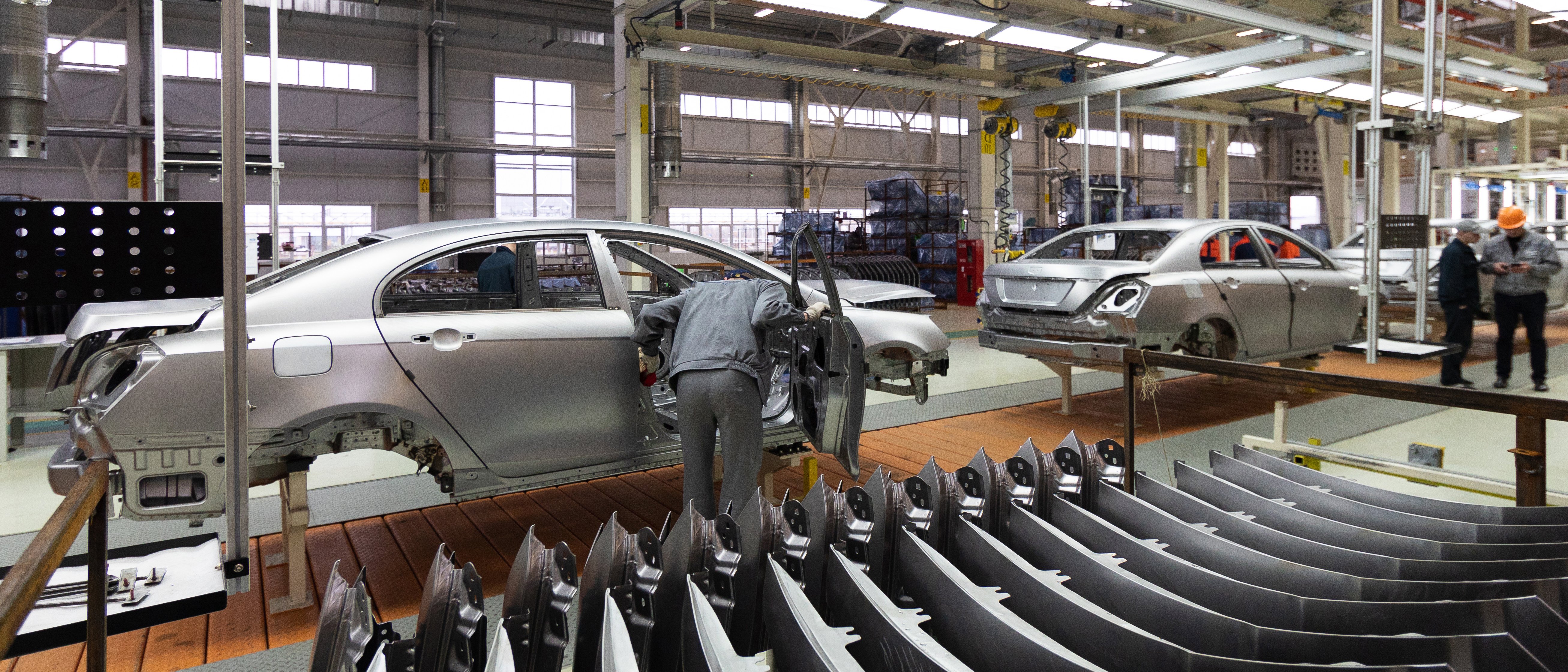
Throughout its history, the auto industry has had to change more than once. But what happens when the changing trends project fewer vehicles and fewer sales?
It’s safe to say the auto industry isn’t the same as it once was – a lot has changed over the years. But one of the most significant shifts we’ve seen recently has been the reduction in new vehicle manufacturing. There are four factors that seem to be influencing this trend:
- The average new vehicle loan payment recently hit $523 per month. That’s a steep price for many households to allocate toward a vehicle every month. Because of this, many Americans are now holding on to their older—likely paid off—vehicles longer to avoid the burden of a recurring payment on a new ride.
- When they do happen to purchase a replacement vehicle, American drivers are now looking more at used cars over new models. Used vehicle sticker prices are more appealing and often a financial necessity, while depreciation and resale value are less of a concern.
- SUVs and trucks are more popular and more accommodating to the average American lifestyle. As a result, consumers have become less inclined to drive classic sedan models. This has led to reduced demand for a number of models—and a production downturn as well.
- Ridesharing and public transportation are also being substituted for vehicle ownership, particularly in metropolitan areas. In fact, a 2017 survey by Lyft found that 250,000 of its customers that year alone gave up vehicle ownership in lieu of ridesharing – that number is expected to grow.
Though the situation looks dire, manufacturers are already adjusting to accommodate for these trends. Ford, for example, is shifting its focus to producing SUVs and trucks, rather than pouring resources into traditional sedans. Other manufacturers are exploring their own protection coverage to help offset lost new car revenue.
How can dealers adapt to take advantage of these trends as well? Let’s take a look.
What’s the opportunity?
According to NADA, there will be 16.8 million new vehicles sold in 2019—the lowest number since 2014. With sales declining, many car dealers are concerned about how they’ll continue to generate revenue. One solution? An increased focus on quality F&I products. For both new and pre-owned vehicles, F&I programs that offer greater eligibility, expanded coverage options, as well as long term maintenance and protection are more likely to be purchased by consumers.
With trends shifting, 2019 offers an opportunity for dealers and warranty providers to increase consumer awareness of the benefits of F&I products—especially on pre-owned vehicles, where purchases are climbing. As this opportunity presents itself, Fortegra’s underwriting and compliance teams will continue to support dealer partners by offering comprehensive protection options, allowing them to generate revenue by delivering real value to consumers.
How do these industry trends affect auto F&I?
Many are under the impression that the auto F&I industry will be dramatically affected by these recent trends, especially with the shift in vehicle manufacturing and the decrease in estimated new car sales. However, there should be little-to-no negative impact on auto F&I. If dealers and warranty providers are still working together to offer a suite of products and protection options to those purchasing both new and pre-owned vehicles, then the interest in warranty protection will only continue to grow.
Will there be more opportunity for longer-term VSCs?
With more pre-owned car sales than ever, industry experts expect VSC sales to double the new car penetration rate. Moreover, the increased consumer need for a VSC will also lead to the need for additional coverage options over longer terms, helping to spur additional sales for dealers.
With fewer vehicles on the road and manufacturer-owned coverage options, will there be less opportunity for auto dealers?
Despite the fact that manufacturers are continuing to offer their own types of protection—such as extended warranties—it’s unlikely that dealers will be affected due to their long-term understanding of the landscape. Plus, if the estimated 200,000 fewer vehicles sold are divided and spread across the 16,000 new car franchise dealers in the U.S., it only equates to one car per month, per dealer—which doesn’t seem so daunting. Manufacturers are always trying something new when it comes to service contracts, but dealers truly understand the needs and driving habits of their customers. Additionally, non-manufacturer protection options mustbe available, especially on pre-owned vehicles with expired factory warranties.
At Fortegra, we’re always analyzing current trends to help our partners adjust as times change. For more insight on how consumers are impacting the auto industry and how you can stay ahead of the curve, head over to the Fortegra blog.



